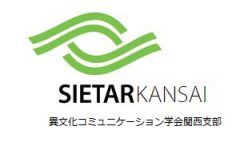Presenters: 1) Yoko Matsuda (School of Economics, University of Hyogo)
2) Akie Tomozawa (Faculty of International Studies and Liberal
Arts, Momoyama Gakuin University)
Date: Saturday, July 10, 2010, 14:00-17:00
(There’s a party at a restaurant after the meeting. About 3000 yen?.)
Place: Ryukoku University Osaka Umeda Campus,
(14 F, Hilton Plaza West Office Tower, 2-2-2, Umeda, Kita-ku, Osaka City)
Access: http://career.ryukoku.ac.jp/osaka_campus/access/index.html
Tel: 06-6344-0218, Fax: 06-6344-0261
Fee: Free (Both members and non-members are welcome.)
Language: Japanese (Q&A can be in English.)
Inquiries and Registration: Prior registration is requested for attendance and the party.
Please send an e-mail to Yoko Matsuda
Description of the presentations
1) Multilayered structure of Australian language-in-education policies: Focusing on Multiculturalism (Yoko Matsuda)
Australia transformed its ‘White Australia policy’ to ‘Multiculturalism’ in the early 1970s. The first national language policies were formulated in 1987, followed by some revised versions since then. They centered around promotion of plural language education at schools, based on the multiculturalism.
Australian multiculturalism has three basic principles, including ‘economic efficiency’ as well as ‘cultural respect’ and ‘social justice’. These three principles sometimes cause conflict over which to come first on a particular issue. Ethnic identity as a group was valued at the earlier stage in 70s -80s, but some criticism against valuing ethnic identity has been raised, such as ‘multiculturalism would divide the society,’ and ‘it assumes the white controls over the non-white.’ Considering these different opinions multi-layered language policies have been developed. However, these policies cause some conflicting situations at school between the maintenance of immigrant and Aboriginal languages, Asian languages for economic purposes and traditional European languages, while we can find a new phenomenon caused by the cross-over between various languages taught at schools. Also ‘intercultural language learning’ has been giving a prospect of paradigm shift in language education field.
2)Language education of “migrating” children – searching for an immigrant society of “Japan model” (Akie Tomozawa)
The number of children whose mother tongue is not Japanese has been increasing rapidly. According to a survey conducted by MEXT( the Ministry of Education, Culture, Sports, Science and Technology) in September 2008, the number of foreign children who require Japanese language teaching is 28,575, (12.5% increase compared to the previous year), and the number of Japanese children who require Japanese language teaching is 4,895, (11.7% increase compared to the previous year) . In total over 33,000 children whose mother tongue is a language other than Japanese are now studying at Japanese schools. Teachers who encounter these non-Japanese speaking children have been struggling with them in the classes day by day without enough knowledge, experience, supporting personnel, budget and support system. Education for foreign children is not considered to be a ‘right and duty’ of the national government but a mere ‘favor’. That’s the reason for the ad hoc treatment of these children’s education.
In 1990s, sudden increase of ‘New-comers’ whose mother tongues are not Japanese, such as Japanese Latinos, Returnees from China (abandoned after the war), Indo-Chinese refugees and children of international marriage, attracted attention of teachers and some effort has been given to improve their situation. However, the educational issue of ‘Old-comers’, such as Korean-Japanese and Chinese who’ve been in Japan for many years and speak only Japanese, has not been widely discussed.
It reflects distress of Japanese society caused by the rapid increase of foreign residents with neither clear government policy for accepting immigrants nor a vision of the future Japanese society. What is the meaning of ‘multicultural society’ in Japan? The analysis of current situation at school will give us an insight into a possible vision for the future.
Profiles of the presenters
1) Professor at the Department of International Economics, University of Hyogo. MA from Osaka University and University of Rochester in the US in linguistics. Ph.D. (socio linguistics) from Osaka University. Research interests are language policies and multiculturalism in Australia, intercultural communication and teaching Japanese as a second language in Australia and Japan. Publications include Language-in-education policies in multicultural Australia, Hituji Shobo, 2009, “ Identity in intercultural communication education for multicultural society” Jinbun Ronshu, 2001.
2) BA from Osaka University for Foreign Studies (English major), MA from History Department of University of Wisconsin at Madison. Teaching at Momoyama Gakuin University (St. Andrews University) from 1991. Major fields of study are Japanese as a Second Language and Language policies. The recent publication is Handbook of Language and Ethnic Identity: Disciplinary and Regional perspectives, Oxford University Press, 2010, (coauthor).
